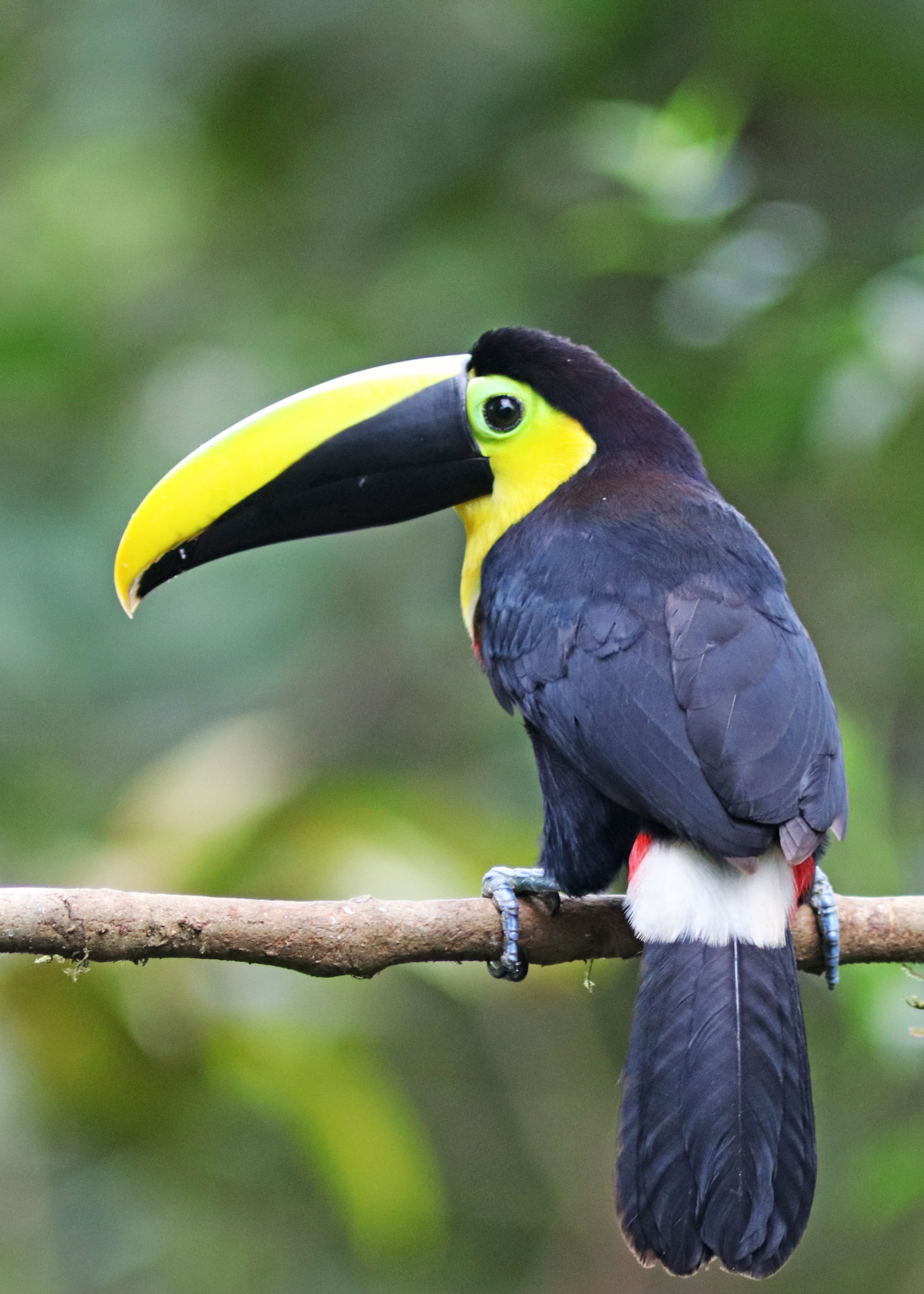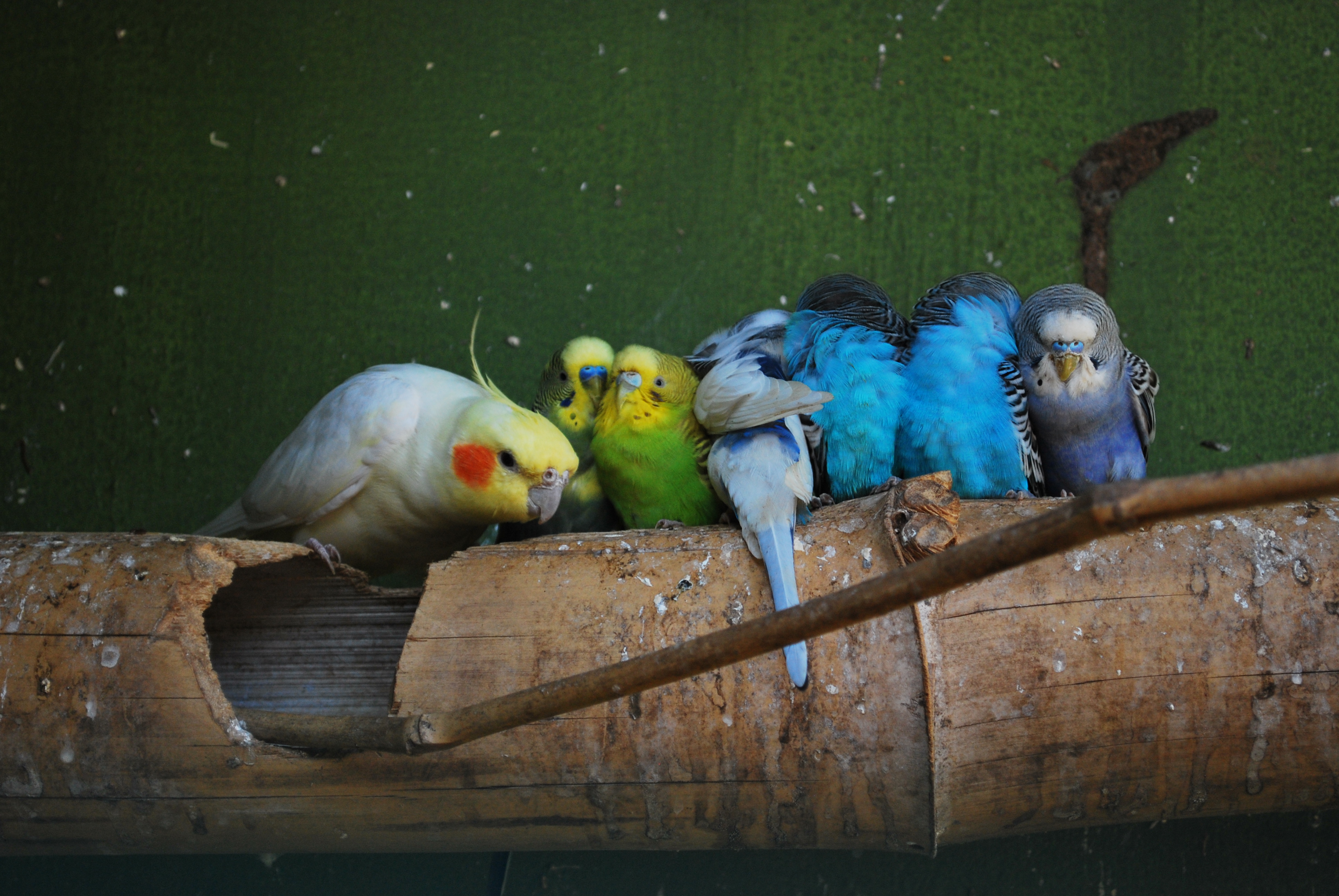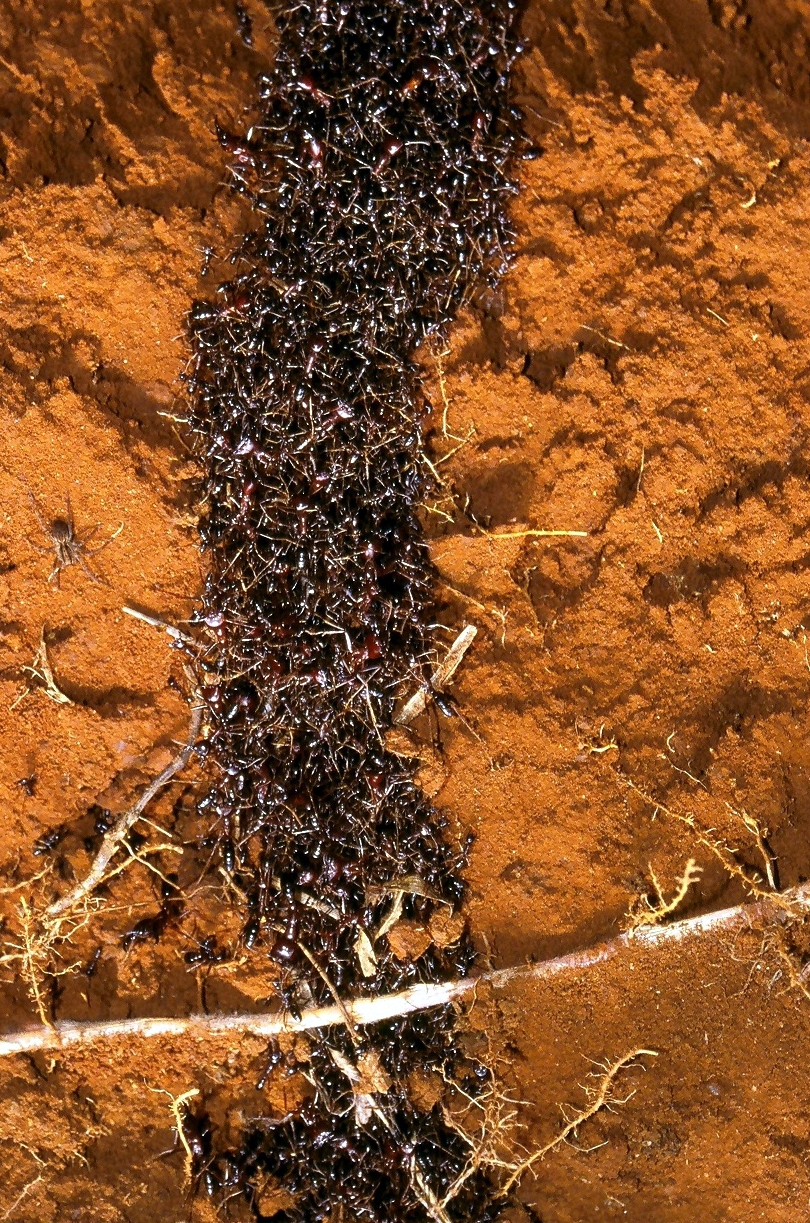|
Choco Toucan
The Choco toucan (''Ramphastos brevis'') is a near-passerine bird in the family Ramphastidae, the toucans, toucanets, and aracaris. It is found in Colombia and Ecuador. Taxonomy and systematics The Choco toucan was long treated as a subspecies of the yellow-throated toucan (''R. ambiguus'') but vocal differences and other characteristics led to their being split. It and the channel-billed toucan (''R. vitellinus'') are sister species.Remsen, J. V., Jr., J. I. Areta, E. Bonaccorso, S. Claramunt, A. Jaramillo, D. F. Lane, J. F. Pacheco, M. B. Robbins, F. G. Stiles, and K. J. Zimmer. Version 24 July 2022. A classification of the bird species of South America. American Ornithological Society. https://www.museum.lsu.edu/~Remsen/SACCBaseline.htm retrieved July 24, 2022 The Choco toucan is monotypic. Description The Choco toucan is long and weighs . The sexes are alike though the female's bill is shorter than the male's. Their bill's maxilla is mostly yellow with some green on th ... [...More Info...] [...Related Items...] OR: [Wikipedia] [Google] [Baidu] |
Rodolphe Meyer De Schauensee
Rodolphe Meyer de Schauensee (January 4, 1901 – April 24, 1984) was an American ornithologist. He was born in Rome, Italy to a Swiss aristocratic family. His family moved to the United States in 1913. He was the curator of ornithology at the Academy of Natural Sciences in Philadelphia for nearly fifty years. He was particularly noted for his study of South American birds. He expanded the academy's collection of bird skins, taking part in collecting trips to Brazil, Thailand, Burma, southern Africa, the East Indies The East Indies (or simply the Indies), is a term used in historical narratives of the Age of Discovery. The Indies refers to various lands in the East or the Eastern hemisphere, particularly the islands and mainlands found in and aroun ..., and Guatemala. He wrote about the birds of South America, including the groundbreaking ''A Guide to the Birds of South America'' in 1970, and published a book on the birds of China just two weeks before his death. De ... [...More Info...] [...Related Items...] OR: [Wikipedia] [Google] [Baidu] |
Covert Feather
A covert feather or tectrix on a bird Birds are a group of warm-blooded vertebrates constituting the class Aves (), characterised by feathers, toothless beaked jaws, the laying of hard-shelled eggs, a high metabolic rate, a four-chambered heart, and a strong yet lightweig ... is one of a set of feathers, called coverts (or ''tectrices''), which, as the name implies, cover other feathers. The coverts help to smooth airflow over the wings and tail. Ear coverts The ear coverts are small feathers behind the bird's eye which cover the ear opening (the ear of a bird has no external features) Tail coverts The uppertail and undertail coverts cover the base of the tail feathers above and below. Sometimes these coverts are more specialised. The "tail" of a peacock is made of very elongated uppertail coverts. Wing coverts The upperwing coverts fall into two groups: those on the inner wing, which overlay the secondary flight feathers, known as the secondary coverts, and t ... [...More Info...] [...Related Items...] OR: [Wikipedia] [Google] [Baidu] |
Aviculture
Aviculture is the practice of keeping and breeding birds, especially of wild birds in captivity. Types There are various reasons that people get involved in aviculture. Some people breed birds to preserve a species. Some people breed parrots as companion birds, and some people breed birds to make a profit. Aviculture Aviculture is the practice of keeping birds ( class ''Aves'') in captivity using controlled conditions, normally within the confines of an aviary, for hobby, business, research and conservation purposes. Some reasons for aviculture are: breeding birds to preserve the species because many avian species are at risk due to habitat destruction and natural disaster. Aviculture encourages conservation, provides education about avian species, provides companion birds for the public, and includes research on avian behaviour. Publications and avicultural societies Publications on aviculture include books on species which include pets, books on breeding and introductor ... [...More Info...] [...Related Items...] OR: [Wikipedia] [Google] [Baidu] |
Taxa Named By Rodolphe Meyer De Schauensee
In biology, a taxon (back-formation from ''taxonomy''; plural taxa) is a group of one or more populations of an organism or organisms seen by taxonomists to form a unit. Although neither is required, a taxon is usually known by a particular name and given a particular ranking, especially if and when it is accepted or becomes established. It is very common, however, for taxonomists to remain at odds over what belongs to a taxon and the criteria used for inclusion. If a taxon is given a formal scientific name, its use is then governed by one of the nomenclature codes specifying which scientific name is correct for a particular grouping. Initial attempts at classifying and ordering organisms (plants and animals) were set forth in Carl Linnaeus's system in ''Systema Naturae'', 10th edition (1758), as well as an unpublished work by Bernard and Antoine Laurent de Jussieu. The idea of a unit-based system of biological classification was first made widely available in 1805 in the int ... [...More Info...] [...Related Items...] OR: [Wikipedia] [Google] [Baidu] |
Birds Described In 1945
Birds are a group of warm-blooded vertebrates constituting the class Aves (), characterised by feathers, toothless beaked jaws, the laying of hard-shelled eggs, a high metabolic rate, a four-chambered heart, and a strong yet lightweight skeleton. Birds live worldwide and range in size from the bee hummingbird to the ostrich. There are about ten thousand living species, more than half of which are passerine, or "perching" birds. Birds have whose development varies according to species; the only known groups without wings are the extinct moa and elephant birds. Wings, which are modified forelimbs, gave birds the ability to fly, although further evolution has led to the loss of flight in some birds, including ratites, penguins, and diverse endemic island species. The digestive and respiratory systems of birds are also uniquely adapted for flight. Some bird species of aquatic environments, particularly seabirds and some waterbirds, have further evolved for swimming. Bird ... [...More Info...] [...Related Items...] OR: [Wikipedia] [Google] [Baidu] |
Birds Of The Tumbes-Chocó-Magdalena
Birds are a group of warm-blooded vertebrates constituting the class Aves (), characterised by feathers, toothless beaked jaws, the laying of hard-shelled eggs, a high metabolic rate, a four-chambered heart, and a strong yet lightweight skeleton. Birds live worldwide and range in size from the bee hummingbird to the ostrich. There are about ten thousand living species, more than half of which are passerine, or "perching" birds. Birds have whose development varies according to species; the only known groups without wings are the extinct moa and elephant birds. Wings, which are modified forelimbs, gave birds the ability to fly, although further evolution has led to the loss of flight in some birds, including ratites, penguins, and diverse endemic island species. The digestive and respiratory systems of birds are also uniquely adapted for flight. Some bird species of aquatic environments, particularly seabirds and some waterbirds, have further evolved for swimming. Bi ... [...More Info...] [...Related Items...] OR: [Wikipedia] [Google] [Baidu] |
Ramphastos
''Ramphastos'' is a genus of toucans, tropical and subtropical near passerine birds from Mexico, and Central and South America (with one species occurring in the Caribbean), which are brightly marked and have enormous, often colourful, bills.Short, L. L., & Horne, J. F. M. (2002). Toucans (Ramphastidae). pp. 220–272 in del Hoyo, J., Elliott, A., & Sargatal, J. eds. (2002). ''Handbook of the Birds of the World.'' Vol. 7 Jacamars to Woodpecker. Lynx Edicions, Barcelona. Taxonomy The genus ''Ramphastos'' was introduced in 1758 by the Swedish naturalist Carl Linnaeus in the tenth edition of his ''Systema Naturae''. The name is from Ancient Greek ῥαμφηστης/''rhamphēstēs'' meaning "snouted" (from ῥαμφη/''rhampē'' meaning "bill"). The type species was later designated by Nicholas Aylward Vigors as the white-throated toucan (''Ramphastos tucanus''). Species The genus contains eight species: Former species Some authorities, either presently or formerly, recogniz ... [...More Info...] [...Related Items...] OR: [Wikipedia] [Google] [Baidu] |
IUCN
The International Union for Conservation of Nature (IUCN; officially International Union for Conservation of Nature and Natural Resources) is an international organization working in the field of nature conservation and sustainable use of natural resources. It is involved in data gathering and analysis, research, field projects, advocacy, and education. IUCN's mission is to "influence, encourage and assist societies throughout the world to conserve nature and to ensure that any use of natural resources is equitable and ecologically sustainable". Over the past decades, IUCN has widened its focus beyond conservation ecology and now incorporates issues related to sustainable development in its projects. IUCN does not itself aim to mobilize the public in support of nature conservation. It tries to influence the actions of governments, business and other stakeholders by providing information and advice and through building partnerships. The organization is best known to the wider ... [...More Info...] [...Related Items...] OR: [Wikipedia] [Google] [Baidu] |
Army Ant
The name army ant (or legionary ant or ''marabunta'') is applied to over 200 ant species in different lineages. Because of their aggressive predatory foraging groups, known as "raids", a huge number of ants forage simultaneously over a limited area. Another shared feature is that, unlike most ant species, army ants do not construct permanent nests; an army ant colony moves almost incessantly over the time it exists. All species are members of the true ant family, Formicidae, but several groups have independently evolved the same basic behavioural and ecological syndrome. This syndrome is often referred to as "legionary behaviour", and may be an example of convergent evolution. Most New World army ants belong to the genera '' Cheliomyrmex'', '' Neivamyrmex'', ''Nomamyrmex'', ''Labidus'', and '' Eciton''. The largest genus is ''Neivamyrmex'', which contains more than 120 species; the most predominant species is '' Eciton burchellii''; its common name "army ant" is considered ... [...More Info...] [...Related Items...] OR: [Wikipedia] [Google] [Baidu] |
El Chocó
EL, El or el may refer to: Religion * El (deity), a Semitic word for "God" People * EL (rapper) (born 1983), stage name of Elorm Adablah, a Ghanaian rapper and sound engineer * El DeBarge, music artist * El Franco Lee (1949–2016), American politician * Ephrat Livni (born 1972), American street artist Arts, entertainment, and media Fictional entities * El, a character from the manga series ''Shugo Chara!'' by Peach-Pit * El, short for Eleven, a fictional character in the TV series ''Stranger Things'' * El, family name of Kal-El (Superman) and his father Jor-El in '' Superman'' *E.L. Faldt, character in the road comedy film ''Road Trip'' Literature * ''Él'', 1926 autobiographical novel by Mercedes Pinto * ''Él'' (visual novel), a 2000 Japanese adult visual novel Music * Él Records, an independent record label from the UK founded by Mike Alway * ''Él'' (Lucero album), a 1982 album by Lucero * "Él", Spanish song by Rubén Blades from ''Caminando'' (album) * "Él" (L ... [...More Info...] [...Related Items...] OR: [Wikipedia] [Google] [Baidu] |
Common Name
In biology, a common name of a taxon or organism (also known as a vernacular name, English name, colloquial name, country name, popular name, or farmer's name) is a name that is based on the normal language of everyday life; and is often contrasted with the scientific name for the same organism, which is Latinized. A common name is sometimes frequently used, but that is not always the case. In chemistry, IUPAC defines a common name as one that, although it unambiguously defines a chemical, does not follow the current systematic naming convention, such as acetone, systematically 2-propanone, while a vernacular name describes one used in a lab, trade or industry that does not unambiguously describe a single chemical, such as copper sulfate, which may refer to either copper(I) sulfate or copper(II) sulfate. Sometimes common names are created by authorities on one particular subject, in an attempt to make it possible for members of the general public (including such interested p ... [...More Info...] [...Related Items...] OR: [Wikipedia] [Google] [Baidu] |
Mandible
In anatomy, the mandible, lower jaw or jawbone is the largest, strongest and lowest bone in the human facial skeleton. It forms the lower jaw and holds the lower teeth in place. The mandible sits beneath the maxilla. It is the only movable bone of the skull (discounting the ossicles of the middle ear). It is connected to the temporal bones by the temporomandibular joints. The bone is formed in the fetus from a fusion of the left and right mandibular prominences, and the point where these sides join, the mandibular symphysis, is still visible as a faint ridge in the midline. Like other symphyses in the body, this is a midline articulation where the bones are joined by fibrocartilage, but this articulation fuses together in early childhood.Illustrated Anatomy of the Head and Neck, Fehrenbach and Herring, Elsevier, 2012, p. 59 The word "mandible" derives from the Latin word ''mandibula'', "jawbone" (literally "one used for chewing"), from '' mandere'' "to chew" and ''-bula'' ... [...More Info...] [...Related Items...] OR: [Wikipedia] [Google] [Baidu] |




.jpg)



